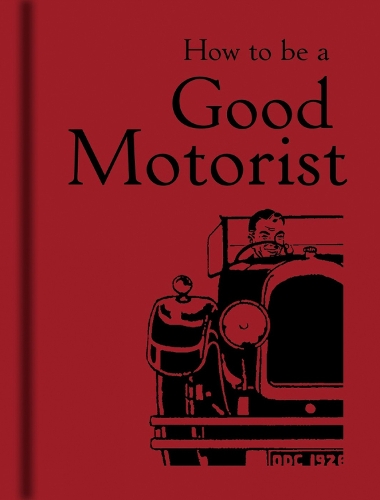
How to be a Good Motorist
(Hardback)
Publishing Details
How to be a Good Motorist
By (Author) Bodleian Library
Bodleian Library
Bodleian Library
30th August 2013
United Kingdom
Classifications
Physical Properties
Hardback
96
Width 88mm, Height 115mm, Spine 11mm
86g
Description
How should a motorist converse with the police Should you switch off your headlights when another car approaches What parts of the engine can you fix with a sheet of emery paper, insulating tape and copper wire The 1920s heralded the age of motoring with the arrival of the 'affordable' Austin Seven and the increasing popularity of Morris Motors in Britain. Yet the first edition of the Highway Code would not appear for another decade and the rules of the road were rudimentary to say the least. This charming and practical guide provides enduring advice to novice motorists on how to cope with such hazards as skidding, headlight dazzle and sheep on the road, much of which is still instructive on today's car journeys. Many of the author's observations will strike a chord with the modern driver: 'When driving, look on all other drivers as fools...'. Others evoke the style and etiquette of a glamorous bygone era: 'A good chauffeur... will save his employer a great deal of expense'; 'an average speed of twenty miles per hour... allows you and your passengers to see something of the countryside'. Covering such topics as unscrupulous second-hand car dealers, women drivers and 'dashboard delights', this little book provides all the information needed to get maximum enjoyment out of the open road, complete with leisurely picnics and a little light motor-car maintenance.
Reviews
"As ever, the only way to learn to drive is by hitting the road--and hoping that's all you hit. But that's never stopped the learning-by-reading lobby from writing guides on driving. How to Be a Good Motorist, abridged from a British book written by Harold Pemberton in 1923, gamely confronts automotive woes like how to handle a skid, a flat tire, and livestock grazing in the road."-- "New York Times" (6/1/2014 12:00:00 AM)
Author Bio
The Bodleian Library produces beautiful and authoritative books which help to bring the riches of Oxford's libraries to readers around the world. They publish on a very wide range of subjects, including catalogues and other titles related to their exhibitions, illustrated and non-illustrated thematic works and facsimiles, gift books, and children's books and stationery.
